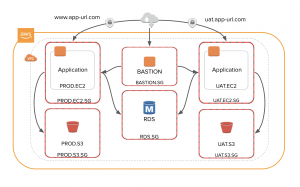October 12, 2020
We are living in the world of digital data. Healthcare is one of the fields that is extensively utilizing electronic health records in everyday healthcare operations.
The electronic health records include insurance information, medication and treatment plans, and other personal information of patients. The digital age of healthcare allows for easy access to this information to provide more efficient care.
With this much important electronic health data, why would any health organization not have some level of encryption?
What is PHI?
Protected Health Information (PHI) is any information in a medical record that can be used to identify an individual that was created, used, or disclosed while providing a health care service, any kind of diagnosis, treatment, etc.
How does encryption help safeguard PHI?
In recent times, PHI has become a target for hackers, and this data must be safeguarded from unauthorized persons. For healthcare service providers, data encryption has become an important means of protecting healthcare information and keeping data secure.
States of digital data that needs protection
1. Data at rest
This is the state in which data is at rest (stored in a place) and is not actively moving from device to device or network to network.
Example:
Databases, file server, cloud storage, mobile, and PC devices.
Different ways to protect data:
Data encryption at the storage level. For example, encryption at the database level. Encryption may slow down the process a bit, so we can decide whether we want to encrypt everything to just PHI.
2. Data at transit
This is the state in which data is traveling between the devices through any kind of medium (public or private network).
Example:
While data is traveling using any medium.
3. Data at use
This is the state of data when some end-user is consuming it by opening it in one or more applications.
Example:
Web or Mobile applications.
Different ways to protect data:
Implementing proper authentication and authorization helps to minimize the data breach.
The following architecture diagram is an example that explains how we can protect data from unauthorized access. Adding multi-layered access control, adding proper security groups and network, etc.

Advantages of Encrypting healthcare data
- It allows us to easily comply with HIPAA and HITECH technical safeguards for healthcare data security.
- Encryption makes data more secure, whether it is in rest or in transit or in use.
- It protects patients’ private and personal information (PHI) from being leaked and ensure data integrity and security.
Contact us if you want to know more about healthcare data encryption. We’ll be happy to answers all your queries.